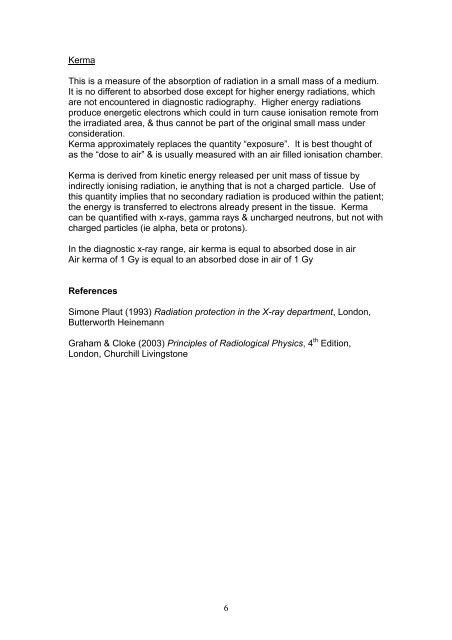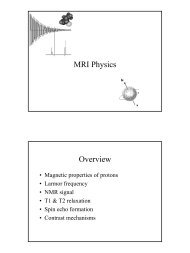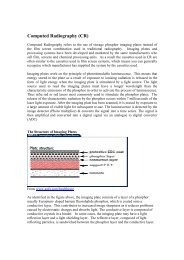Dosimetry introduction
Dosimetry introduction
Dosimetry introduction
You also want an ePaper? Increase the reach of your titles
YUMPU automatically turns print PDFs into web optimized ePapers that Google loves.
KermaThis is a measure of the absorption of radiation in a small mass of a medium.It is no different to absorbed dose except for higher energy radiations, whichare not encountered in diagnostic radiography. Higher energy radiationsproduce energetic electrons which could in turn cause ionisation remote fromthe irradiated area, & thus cannot be part of the original small mass underconsideration.Kerma approximately replaces the quantity “exposure”. It is best thought ofas the “dose to air” & is usually measured with an air filled ionisation chamber.Kerma is derived from kinetic energy released per unit mass of tissue byindirectly ionising radiation, ie anything that is not a charged particle. Use ofthis quantity implies that no secondary radiation is produced within the patient;the energy is transferred to electrons already present in the tissue. Kermacan be quantified with x-rays, gamma rays & uncharged neutrons, but not withcharged particles (ie alpha, beta or protons).In the diagnostic x-ray range, air kerma is equal to absorbed dose in airAir kerma of 1 Gy is equal to an absorbed dose in air of 1 GyReferencesSimone Plaut (1993) Radiation protection in the X-ray department, London,Butterworth HeinemannGraham & Cloke (2003) Principles of Radiological Physics, 4 th Edition,London, Churchill Livingstone6
















